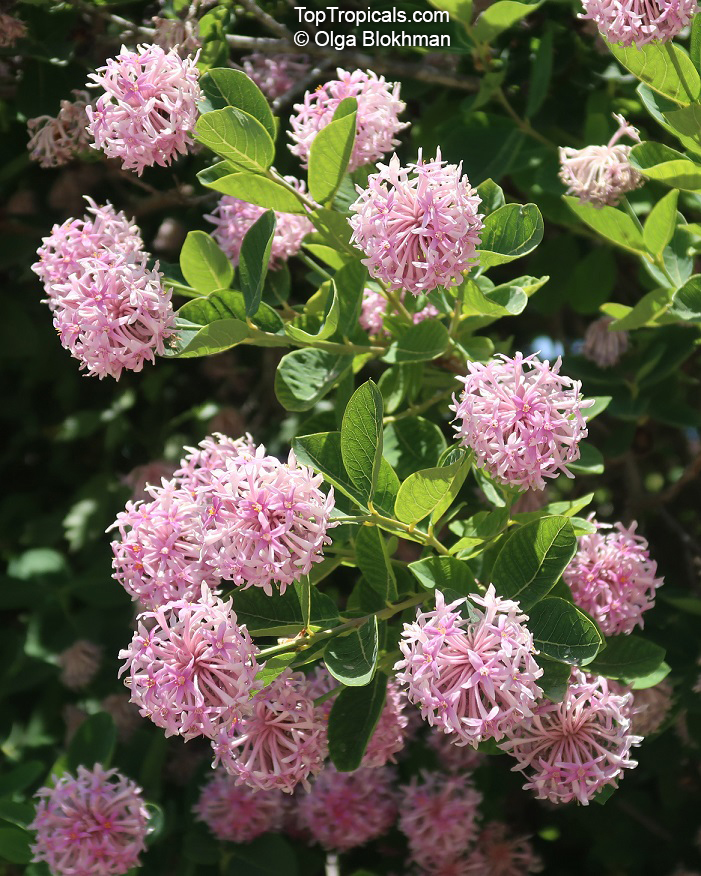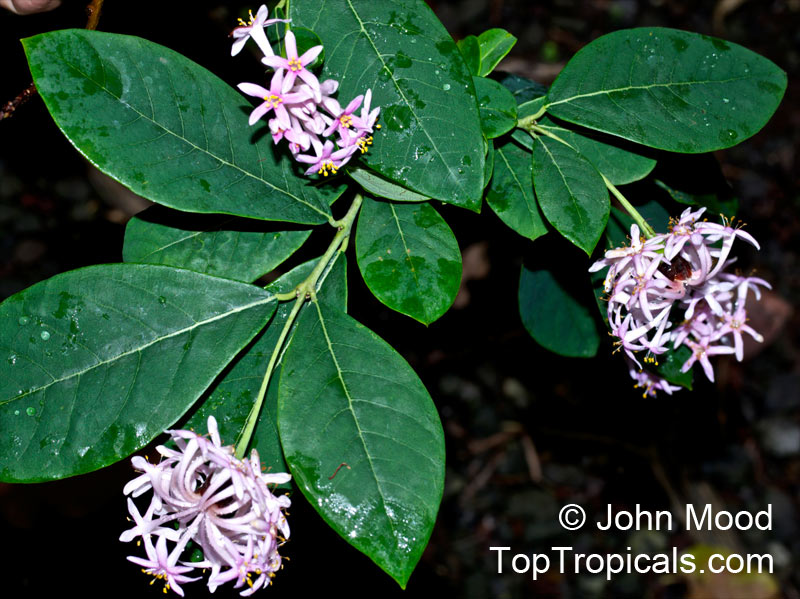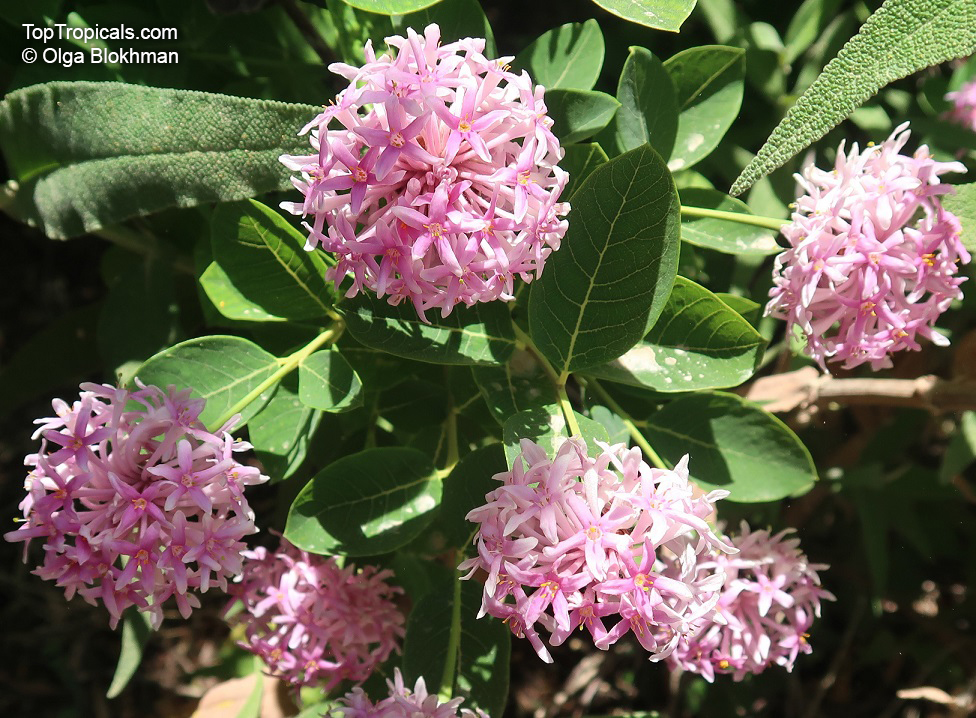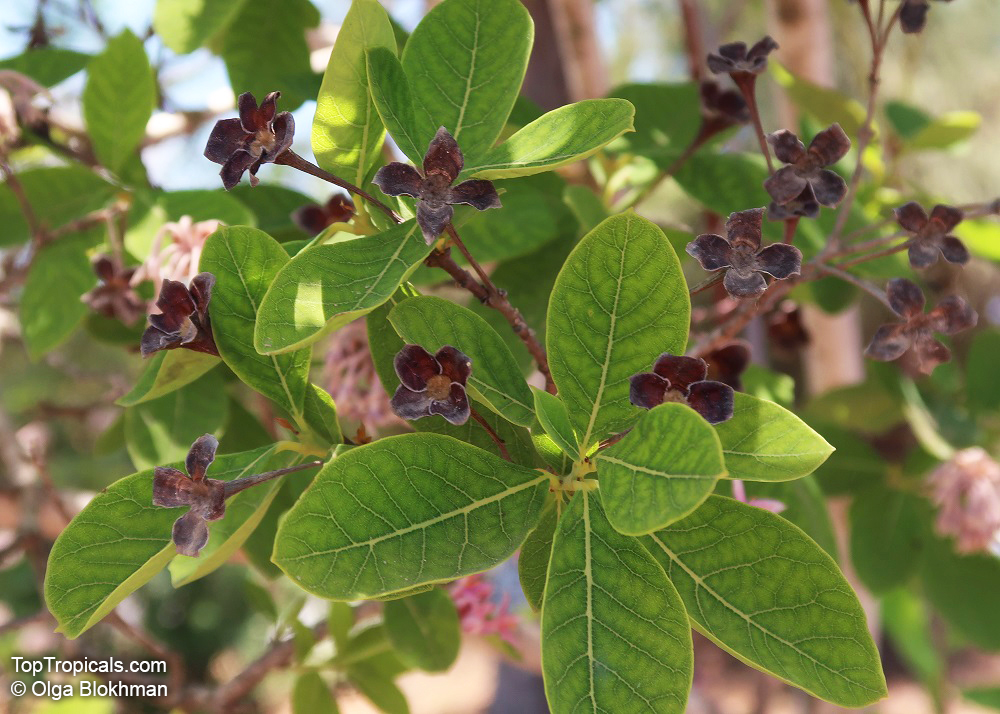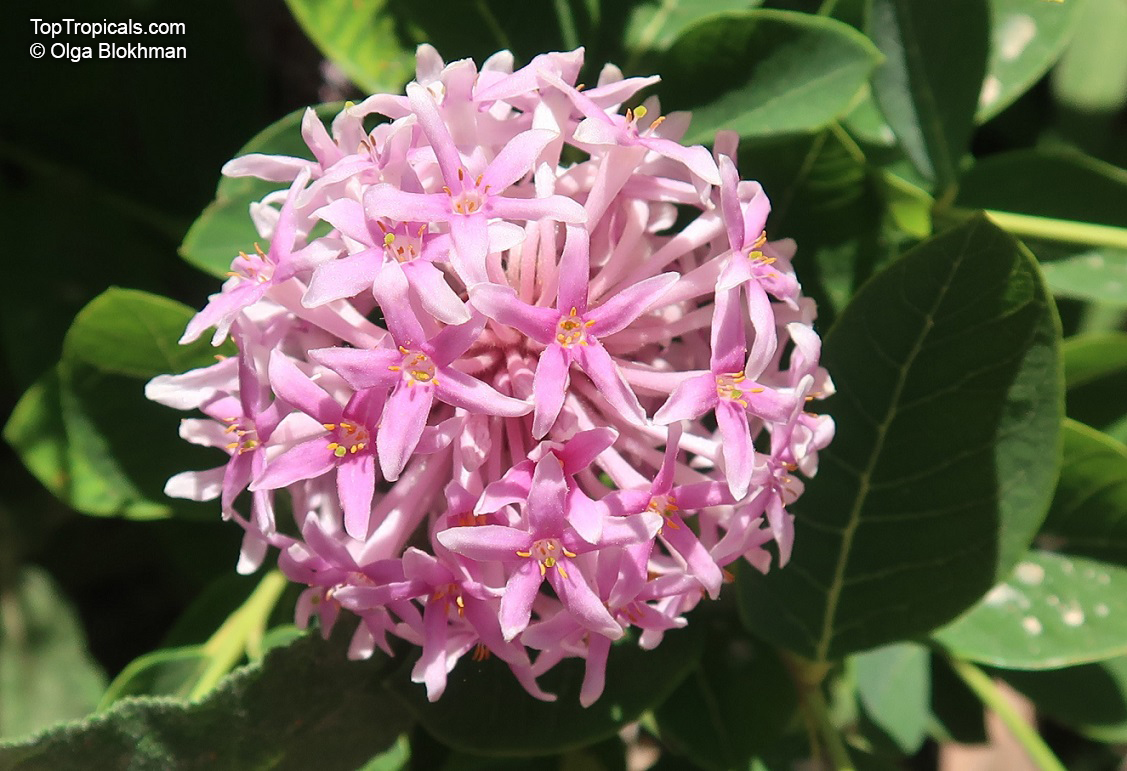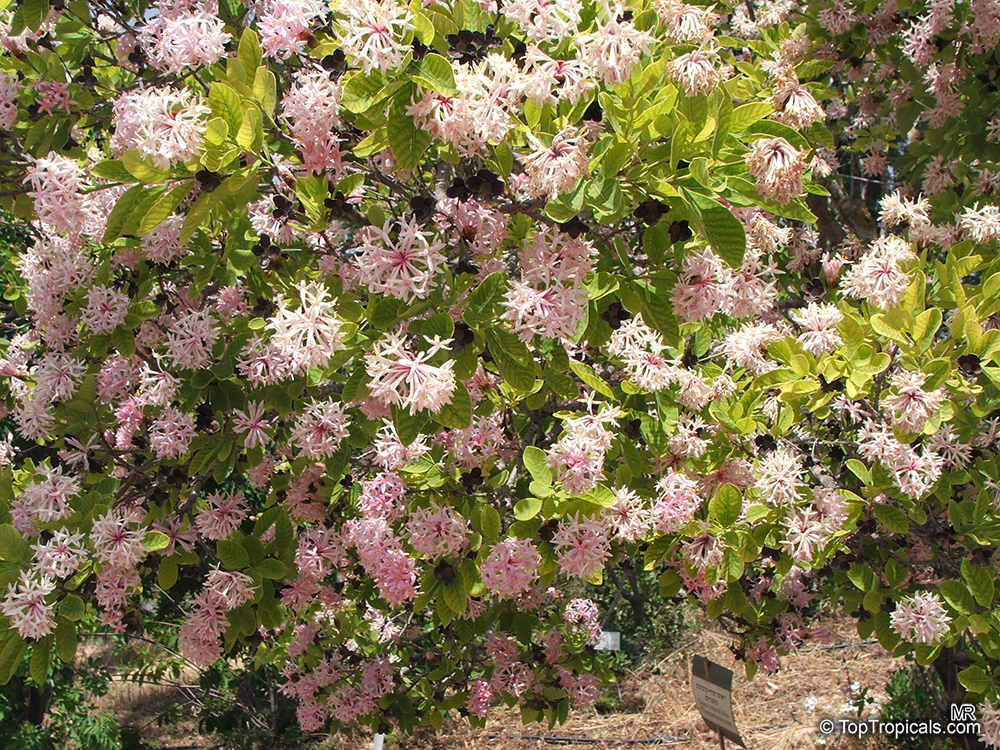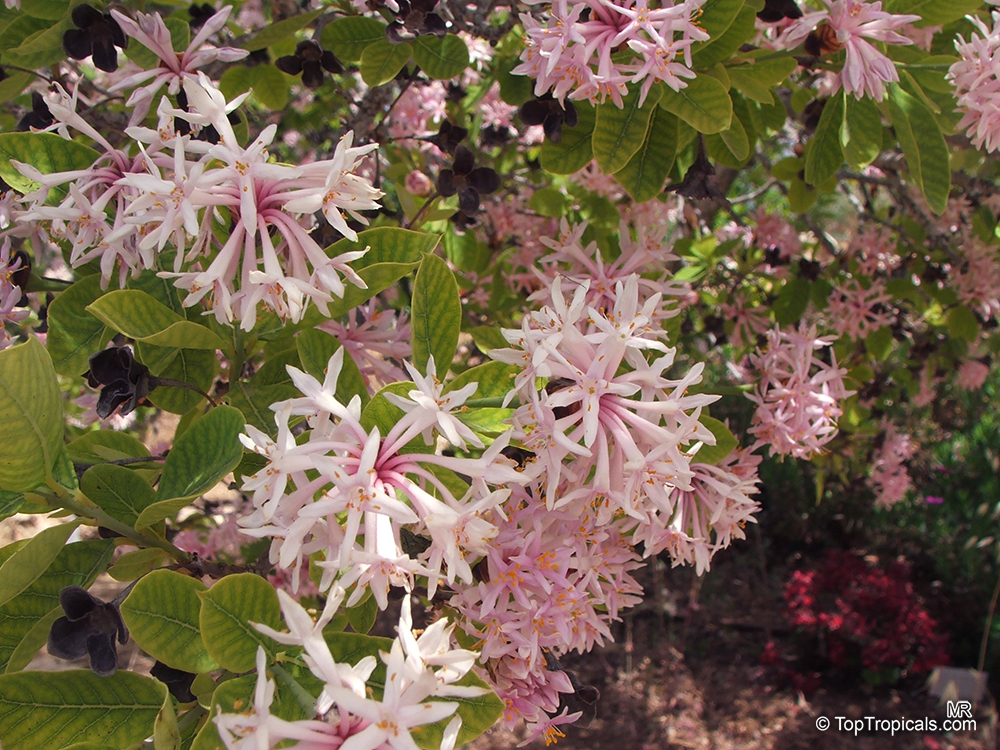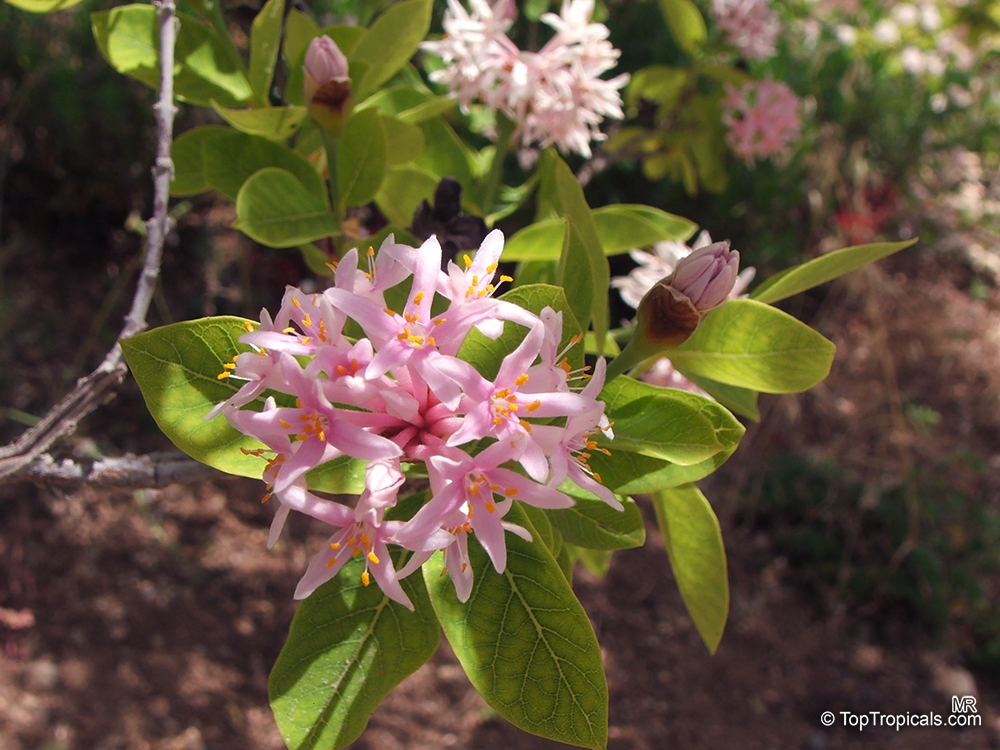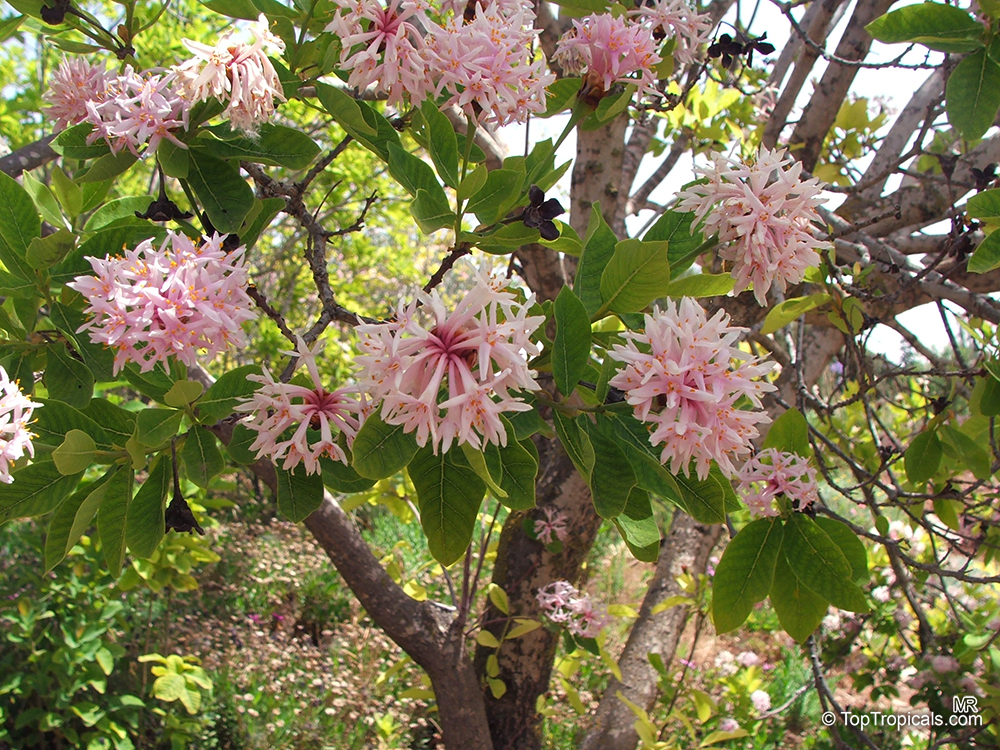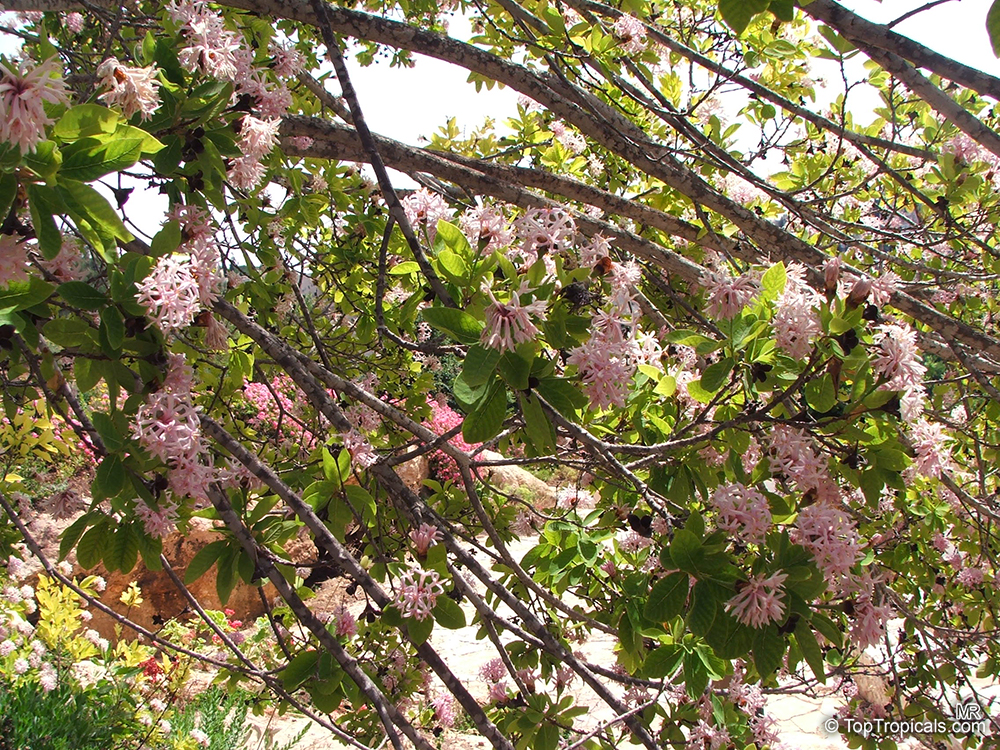Pictogram Guide · Mouse over pictogram for definition
Dais cotinifolia
Pompon tree, Pincushion tree, KannabastFamily: Thymelaeaceae
Origin: South Africa







The Pompon Tree (Dais cotinifolia) is one of the most popular and beloved native trees, due to its versatility; it is small enough to fit in most gardens but strong enough to be used as a street tree. During the winter season, it often resembles a giant candy floss when in full bloom; its branches transform into dense balls of soft pink flowers, each piece cloaking multiple small blooms. These flowers ooze out of the green, cup-like bracts that last for around three weeks.
Month to two months after the flowering stage, a dense abundance of black seeds are produced, and ready to be harvested. This deciduous beauty can reach between 10-20 ft when fully grown and needs to be situated in a sunny spot to flourish. Although it is fairly drought resistant once it is established, mulching of compost around the base of the tree is recommended to reduce water runoff, discourage weed growth, and provide steady sustenance of nutrients in the soil.
It is hardy in USDA zones 9-11, and considered to be freezing tolerant down to 30s F, despite this extra caution should be taken and best kept in a warmer environment within colder climates. For container-growing, the soil should be kept at a lightly moist state, with sufficient mulching and drainage. Regular misting of the foliage with water is also advisable. With the correct care, the Pompon Tree will provide many years of show-stopping splendor in any garden.
